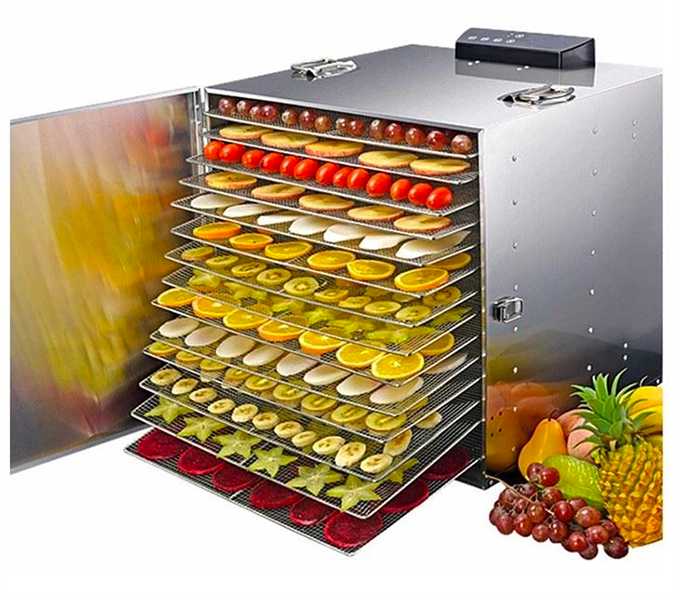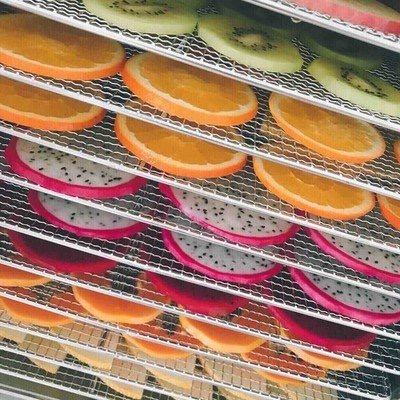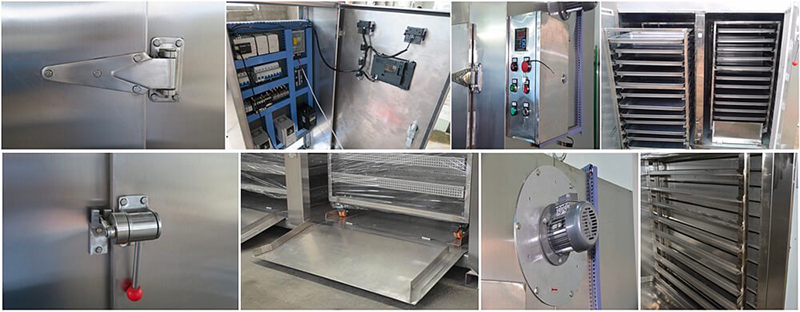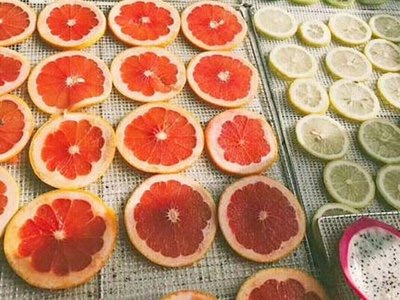
Content Menu
● Understanding Heat Pump Dryers
● The Role of Water in the Drying Process
● Benefits of Using Heat Pump Dryers for Food Drying
● How Heat Pump Dryers Work in Food Processing
>> Step-by-Step Process
● Applications of Heat Pump Dryers in Food Industry
● Detailed Insights on Food Products Suitable for Heat Pump Drying
>> Fruits
>> Vegetables
>> Herbs
>> Meats
● Maintenance of Heat Pump Dryers
● Future Trends in Heat Pump Drying Technology
● Conclusion
● FAQ
>> 1. What is a heat pump dryer?
>> 2. How does a heat pump dryer use water?
>> 3. What are the advantages of using a heat pump dryer for food?
>> 4. Can heat pump dryers be used for all types of food?
>> 5. How do I maintain a heat pump dryer?
Heat pump dryers have gained popularity in recent years due to their energy efficiency and environmentally friendly operation. Unlike traditional dryers that expel moisture into the air, heat pump dryers recycle water during the drying process. This article explores how heat pump dryers utilize water, particularly in the context of food drying, and provides insights into their benefits, operation, and applications.

Understanding Heat Pump Dryers
Heat pump dryers operate on a simple yet effective principle: they use a refrigeration cycle to remove moisture from clothes or food products. The process involves several key components:
- Evaporator: Absorbs heat from the environment and evaporates the refrigerant.
- Compressor: Compresses the refrigerant, raising its temperature and pressure.
- Condenser: Releases heat and condenses the refrigerant back into a liquid state.
- Expansion Valve: Reduces the pressure of the refrigerant before it returns to the evaporator.
This cycle allows heat pump dryers to use less energy than conventional dryers while effectively removing moisture.
The Role of Water in the Drying Process
Heat pump dryers utilize water in two primary ways:
1. Condensation of Moisture: As air is drawn into the dryer, it picks up moisture from the food or clothing. This moist air is then passed over the evaporator coils, where it cools down. The cooling causes water vapor to condense into liquid water, which is collected in a reservoir or drained away.
2. Humidity Control: The dryer continuously monitors humidity levels within the drum. By controlling humidity, heat pump dryers can optimize drying times and prevent over-drying, which can damage food products.
Benefits of Using Heat Pump Dryers for Food Drying
Heat pump dryers offer several advantages for food drying:
- Energy Efficiency: They consume significantly less energy compared to traditional drying methods, making them cost-effective for large-scale food processing.
- Gentle Drying: The low-temperature drying process preserves the nutritional quality and flavor of food products better than high-temperature methods.
- Reduced Environmental Impact: By recycling water and using less energy, heat pump dryers contribute to a lower carbon footprint.
- Versatility: These dryers can handle various food products, including fruits, vegetables, herbs, and meats.
How Heat Pump Dryers Work in Food Processing
Step-by-Step Process
1. Loading: Food products are loaded into the dryer. The design allows for optimal airflow around the items being dried.
2. Heating: The heat pump raises the temperature of the air inside the drum without exceeding safe limits for food products.
3. Moisture Absorption: As warm air circulates around the food, it absorbs moisture. This humid air is then directed to the evaporator.
4. Condensation: In the evaporator, moisture condenses into water as the air cools down. This water is either collected or expelled through a drainage system.
5. Recycling Air: The now-dry air is reheated and recirculated back into the drum to continue drying until desired moisture levels are reached.
6. Monitoring: Throughout this process, sensors monitor humidity and temperature to ensure optimal drying conditions.

Applications of Heat Pump Dryers in Food Industry
Heat pump dryers are increasingly being adopted in various sectors of the food industry:
- Fruit and Vegetable Processing: Ideal for drying fruits like apples, bananas, and tomatoes while retaining their color and nutrients.
- Herb Drying: Preserves essential oils and flavors in herbs such as basil and oregano.
- Meat Dehydration: Used for making jerky or dehydrated meats while ensuring safety through controlled temperatures.
- Snack Production: Popular for producing healthy snacks by dehydrating fruits and vegetables without added sugars or preservatives.
Detailed Insights on Food Products Suitable for Heat Pump Drying
Fruits
Fruits are among the most common products dried using heat pump technology. The gentle drying process helps maintain their natural sugars and flavors.
- Apples: Dried apple slices are a popular snack that retains most of their vitamins when dried at lower temperatures.
- Bananas: Dehydrated bananas make for an excellent source of energy during outdoor activities like hiking.
- Berries: Strawberries, blueberries, and raspberries can be dried without losing their vibrant colors or nutrients.
Vegetables
Vegetables also benefit significantly from heat pump drying:
- Tomatoes: Sun-dried tomatoes are a culinary favorite; heat pump drying enhances their taste without compromising nutritional value.
- Carrots & Peas: These vegetables can be dried efficiently while preserving their texture and flavor for later use in soups or stews.
Herbs
Herbs are sensitive to temperature changes; thus, heat pump dryers are perfect:
- Basil & Oregano: These herbs dry quickly while retaining essential oils that contribute to their flavor profile.
- Thyme & Rosemary: Dried herbs can be stored longer without losing potency when dried properly using this method.
Meats
Meat dehydration requires careful temperature control to ensure safety:
- Jerky Production: Heat pump dryers can produce high-quality jerky by removing moisture while preventing bacterial growth.
- Dehydrated Sausages: Sausages can be dried efficiently without excessive fat loss or flavor degradation.
Maintenance of Heat Pump Dryers
Proper maintenance is crucial for ensuring that heat pump dryers operate efficiently over time. Here are some essential maintenance tips:
- Regular Cleaning: Clean filters regularly to prevent dust buildup that can affect airflow efficiency.
- Check Drainage Systems: Ensure that drainage systems are clear to avoid water accumulation inside the dryer.
- Inspect Seals and Gaskets: Regularly check door seals and gaskets for wear or damage to maintain optimal insulation.
Future Trends in Heat Pump Drying Technology
As technology advances, so do innovations in heat pump drying systems:
- Smart Technology Integration: Future models may incorporate IoT technology allowing users to monitor operations remotely via smartphone apps.
- Improved Energy Efficiency Ratings: Ongoing research aims at developing even more energy-efficient systems that further reduce operational costs.
- Sustainable Materials Usage: Manufacturers may begin using more sustainable materials in dryer construction to enhance eco-friendliness.
Conclusion
Heat pump dryers represent a significant advancement in drying technology, particularly for food processing applications. Their ability to recycle water not only enhances energy efficiency but also improves product quality by allowing for gentle drying at controlled temperatures. As more businesses recognize these benefits, heat pump dryers are likely to become a standard in food production facilities worldwide. With ongoing advancements in technology and sustainability practices, these systems will continue evolving to meet industry demands effectively.

FAQ
1. What is a heat pump dryer?
A heat pump dryer is an energy-efficient appliance that uses a refrigeration cycle to remove moisture from clothes or food without expelling hot air outside.
2. How does a heat pump dryer use water?
Heat pump dryers condense moisture from humid air into liquid water during the drying process, which can be collected or drained away.
3. What are the advantages of using a heat pump dryer for food?
The advantages include energy efficiency, gentle drying that preserves nutrients, reduced environmental impact, and versatility in handling various food products.
4. Can heat pump dryers be used for all types of food?
Yes, heat pump dryers can effectively dry fruits, vegetables, herbs, and meats while maintaining quality and safety standards.
5. How do I maintain a heat pump dryer?
Regular maintenance includes cleaning filters, checking drainage systems for blockages, and ensuring that sensors are functioning properly to maintain optimal performance.












